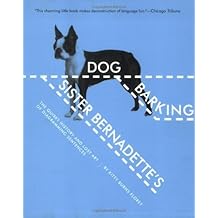 What’s it like to run a small, nonprofit indie publisher located in a town of 4,800 people? Join us at the Editors Kingston gathering on May 9 and find out. We’ll be welcoming Leigh Nash, the publisher of Invisible Publishing, which has its offices over the bookstore in Picton, Ontario.
What’s it like to run a small, nonprofit indie publisher located in a town of 4,800 people? Join us at the Editors Kingston gathering on May 9 and find out. We’ll be welcoming Leigh Nash, the publisher of Invisible Publishing, which has its offices over the bookstore in Picton, Ontario.Invisible produces “cool and contemporary” Canadian fiction, creative non-fiction, and poetry. As a not-for-profit publisher, its aim is to publish diverse voices and stories in beautifully designed and affordable editions.
Even though we’re small in scale, we take our work and our mission seriously: we believe in building communities that sustain and encourage engaging, literary, and current writing.
— Invisible Publishing
 In addition to fiction (including last year’s Giller-nominated I Am a Truck by Michelle Winters), the catalogue at Invisible includes works of graphic fiction and non-fiction, pop culture biographies, experimental poetry, and prose. The publisher is also home to the Bibliophonic series (music bios) and the Throwback series (reinvented reissues). You can read more about Invisible Publishing in this Literary Press Group article.
In addition to fiction (including last year’s Giller-nominated I Am a Truck by Michelle Winters), the catalogue at Invisible includes works of graphic fiction and non-fiction, pop culture biographies, experimental poetry, and prose. The publisher is also home to the Bibliophonic series (music bios) and the Throwback series (reinvented reissues). You can read more about Invisible Publishing in this Literary Press Group article.
Leigh will give us an introduction to the organization, then answer some prepared questions in conversation with Ellie. She’ll also be happy to take questions from attendees.
 Leigh Nash currently serves as chair of the board of directors for eBOUND Canada, as treasurer for Canadian Women in the Literary Arts (CWILA), and on the Association of Canadian Publishers’ (ACP’s) board of directors. She received her BA in Creative Writing and Communications from York University and her MFA in Creative Writing from the University of Guelph. Her first book of poetry, Goodbye, Ukulele, was published by Mansfield Press in 2010.
Leigh Nash currently serves as chair of the board of directors for eBOUND Canada, as treasurer for Canadian Women in the Literary Arts (CWILA), and on the Association of Canadian Publishers’ (ACP’s) board of directors. She received her BA in Creative Writing and Communications from York University and her MFA in Creative Writing from the University of Guelph. Her first book of poetry, Goodbye, Ukulele, was published by Mansfield Press in 2010.
Join Us!
We meet at the usual place and time:
- Ongwanada Resource Centre, 191 Portsmouth Avenue
- 7 to 9 p.m. (Doors open at 6:30)
- Light refreshments
- Both Editors Canada members and non-members welcome
Reminder: New Meeting Fee Policy
After much discussion and with overwhelming support from the group, we began in March to ask nonmembers of Editors Canada to pay $5 each when attending our meetings. Newcomers are invited to attend their first meeting for free.
Coming Up Wednesday, June 20*: Summer Social
*NOTE unusual timing (this is the THIRD Wednesday of June).
Join us for a pay-as-you-go meal and/or drinks in a casual Kingston spot.
All welcome!
Location & time TBA.


 g sentences was a standard part of the English curriculum in North American schools. (There is even a description of a teenaged Laura Ingalls diagramming sentences in Little Town on the Prairie.) Like much of the rest of formal grammar education, diagramming fell out of favour in the 1960s, but it is enjoying something of a renaissance.
g sentences was a standard part of the English curriculum in North American schools. (There is even a description of a teenaged Laura Ingalls diagramming sentences in Little Town on the Prairie.) Like much of the rest of formal grammar education, diagramming fell out of favour in the 1960s, but it is enjoying something of a renaissance.
 To market ourselves effectively to the clients we want to work with, we should
To market ourselves effectively to the clients we want to work with, we should